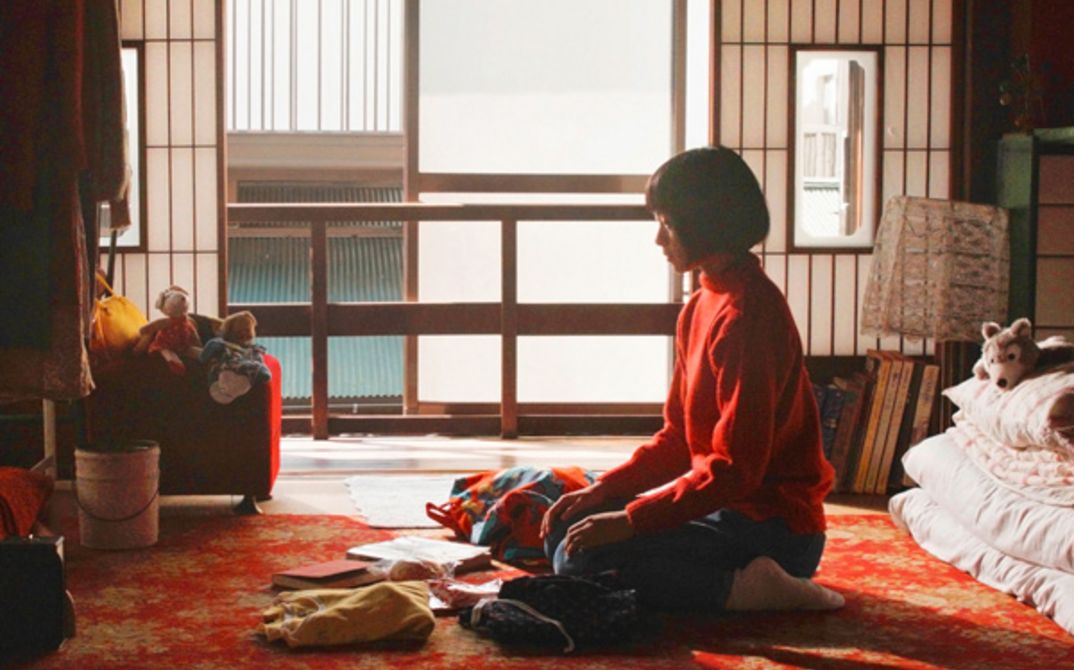Polyphony or the second dimension
Two superimposed, independent stories play out on the same stage. These so-called parallel worlds are neither in the past nor the present. They are two independent events happening at the same time. The structure of this film is inspired from the fugal compositions of Johann Sebastian Bach. A fugue is a kind of musical chase between two or more vocal parts. The composer develops the parts independently, yet still fitting together, while making each part a delayed, recognisable variation of the preceding one. A vocal part starts followed after a few seconds by a second and so forth. A polyphonic harmony results from the overlapping arrangement of independent, heterogeneous voices, which together become a distinct, single composition. It has been my dream to take a multi-plot structure and make a similarly ‘polyphonic’ film.
The ‘vocal part’ in this case is a human being. Make one person a part playing in one world and without being aware of it, this part is repeated or developed independently with another person in another world. The two independent parts yield a complete piece of music. In this film, the other person in another world could be someone who lives in a different dimension, or someone who lives on the opposite side of the Earth. To be somehow linked with another with whom one has absolutely no connection is, in some way, encouraging.
One story is about a fourteen-year-old girl, Seri, who has lost her father; the other is about a woman with amnesia, Sana, who is taken in by a woman named Tōko and given shelter. As the story develops, a hole begins to form in the membrane-like barrier that separates the two independent worlds. The connection between them becomes clearer. The two protagonists start to sense one another as if sensing an apparition, but also something more specific.
The world we live in and another world of which we are not aware – what would happen if they came together? To try to believe in the existence of more than one world in the universe is the beginning of accepting a different existence from your own. If one day you should hear someone else’s voice, please make sure that this voice is as important as your own. (Yui Kiyohara)
Conversation with Yui Kiyohara: “Several worlds can exist”
Finishing the film without revealing the narrative connection between the two worlds is a very courageous choice. What were your reasons for it? And what do you want to say with your film?
Yui Kiyohara: I wanted to show the uncertainty of the world we live in. Generally speaking, when making films, we must pay attention to how deeply we tell one single story. However, I have been wondering if it is right to accept this idea without any doubts. When I was a child, I sometimes thought for example, ‘My life must be a dream of an adult woman who lost her consciousness while she was anesthetised during a surgery. If the woman wakes up, I may disappear.’ Of course it was just a delusion, but since then I have being thinking about the uncertainty of the world. When I was a child, this idea was just scary. Now, the idea that there are some other worlds that may co-exist gives me hope. I can only see the world from my perspective, while the others can only see the world from their perspectives. I think it is important to realise that everyone has a completely different world. In OUR HOUSE, I would like to depict my perception of this world: several worlds can exist, and for me, absolute things are not necessarily absolute.
The characters in the film seem to be ordinary people who live their daily lives. But on the other hand, they sometimes look like ghosts who are not real people.
I wanted to depict the idea that someone could change because of the uncertainty of the world. In the scene with the ‘ghost dance’ in the beginning of the film, Seri dances as if she were a ghostly something, But when the light is turned on, she returns to the appearance of an ordinary girl, but she feels the existence of ghosts coming from outside. She is in a state where she cannot understand if the ghost is coming from outside or if she herself and other girls are ghosts. Seri says, ‘The ghost appeared a while ago,’ but she herself has actually became something like a ghost. It also shows the uncertainty and liquidity of the world and herself. The relationship between the two characters in the two worlds can be considered in the same way: one’s existence can be a ghostly existence for others, and vice-versa.
(Interview: Pia Film Festival)
